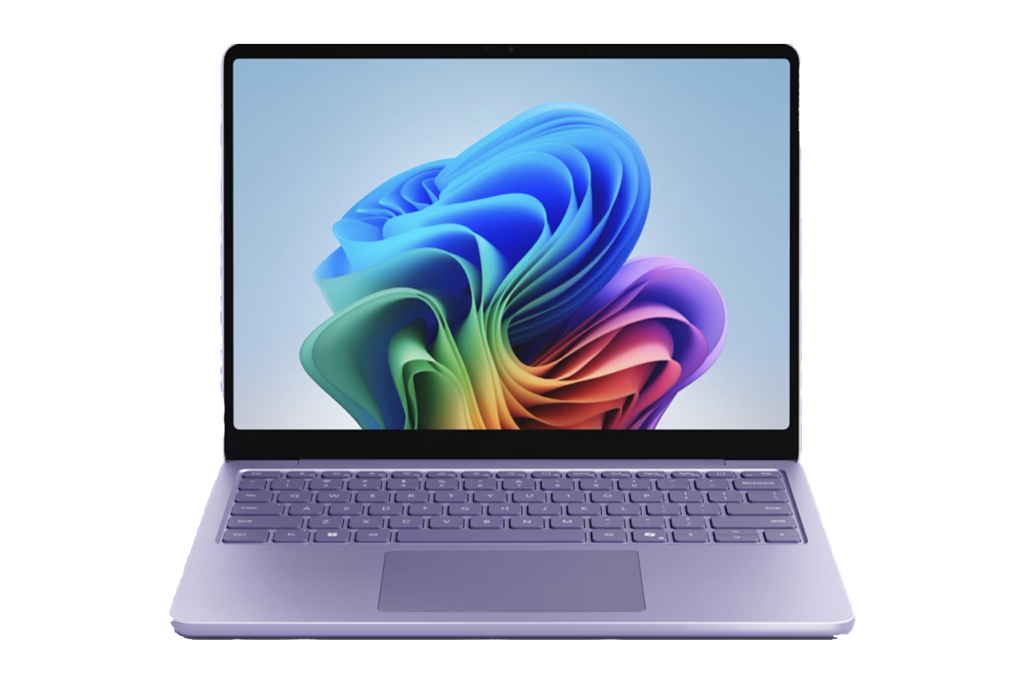We put the Microsoft Surface Laptop 13-inch through our rigorous DXOMARK Laptop test suite to measure its performance in sound, camera and display. In this review, we will break down how it fared in a variety of tests and several common use cases.
Overview
Scoring
Use-case and feature subscores included in the calculations of the global score

Microsoft Surface Laptop 13-inch
Pros
- Dynamic range is generally wide in all tested conditions.
- Level of details is fairly high in bright light conditions.
- Color rendering is generally pleasant.
Cons
- Level of contrast is sometimes too high.
- Noise is visible in most tested conditions.
- Target exposure is somtimes low on challenging HDR conditions.
Test summary
About DXOMARK Laptop tests: For scoring and analysis in our laptop reviews, DXOMARK engineers perform a variety of objective tests and undertake more than 20 hours of perceptual evaluations under controlled lab conditions and real-life scenarios. (For more details about the Laptop protocol, click here.)
The following section gathers key elements of our exhaustive tests and analyses performed in DXOMARK laboratories. Detailed performance evaluations under the form of reports are available upon request. Do not hesitate to contact us.
Camera
Microsoft Surface Laptop 13-inch
136
DXOMARK evaluates the image quality of the built in camera during video calls, whether with a single person or with multiple people, in a variety of lighting conditions. Our camera evaluation particularly assesses the ability of the built-in camera to clearly render human faces during video calls. Other intrinsic camera quality aspects are also evaluated, like color reproduction, texture and noise, as well as artefacts.
In our comprehensive evaluation of laptop cameras, the Microsoft Surface Laptop 13″ stands out with exceptional performance, marking a significant milestone for Windows laptops.
For the first time, a Windows effectively challenges the long lead of Apple in terms of camera quality, delivering top-tier results across various scenarios.
One of the key aspects delivered by the Microsoft Surface Laptop 13’’ is its impressively wide dynamic range in all tested lighting conditions, capturing both highlights and shadows with balance.
In bright environments, the camera is able to retain a high level of detail, while color rendering remains consistently pleasant. In more complex scenarios such as HDR scenes, the Microsoft Surface Laptop 13’’ preserves both illuminated backgrounds and shadowed foregrounds, offering an image quality that rivals to of the Macbook Pro 14’’ (M4, 2024).
Where devices get close is particularly in standard video conferencing situations where face exposure and skin tones appear well-balanced and natural. In more challenging scenarios however, such as strong backlit scenes or in presence of multiple subjects, the camera struggles to maintain a proper face exposure on deeper skin tones without compromising contrast and brightness.
Despite embarking a modest camera sensor, the Microsoft Surface Laptop 13’’ achieves a remarkable detail score of 135, coming very close to the score of the Macbook Pro 14’’ (M4, 2024). This is mainly due to its effort in tuning and effective combination of the advanced ISP as well as AI-driven optimizations.
The following chart presents the camera subscores for the video call use case:
Display
Microsoft Surface Laptop 13-inch
156
Through objective testing, DXOMARK evaluates the display performance by looking at 3 main aspects: Readability, HDR & SDR performances. While evaluating readability, our engineers will particularly focus on screen brightness, contrast, and reflectance, assessing the ease and comfort of viewing displayed images indoors. We also evaluate HDR & SDR performance while looking at video contents, verifying that the display rendering respects the original artistic intent of the filmmaker
With a score of 123, the Microsoft Laptop 13-inch (2025) display performs below average compared to other models in our database. The screen shows several limitations in both color accuracy and brightness.
In HDR mode, color reproduction is limited, with a narrow gamut and reduced fidelity. In SDR mode, the gamut coverage is especially weak in the blue region, leading to slightly desaturated or shifted tones.
On the brightness front, the display’s minimum luminance of 5 nits is well-suited for low-light environments. However, the peak brightness remains below 400 nits, which places it behind many competing devices, particularly when used for HDR content or in well-lit conditions. Brightness uniformity is consistent at both low and high levels. That said, the screen’s glossy surface and relatively high reflectance (around 6%) can affect readability in bright or outdoor settings.
Video performance is also affected: HDR peak brightness offers little improvement over SDR, resulting in limited highlight rendering. SDR gamma is not accurately tuned, with dark tones appearing brighter than intended, possibly due to the LCD panel technology. Moreover, HDR tone mapping elevates shadows and midtones, which can alter the intended visual balance.
Overall, while the laptop’s display is generally suitable for indoor use under controlled lighting conditions indoor typical lighting conditions, it may fall short for tasks requiring high visual accuracy or in more demanding environments such as outdoor settings.
The following chart presents the display subscores:
cd/m²
cd/m²
cd/m²
cd/m²
cd/m²
cd/m²
cd/m²
cd/m²
cd/m²
 Distribution of brightness (min)
Distribution of brightness (min)
cd/m²
cd/m²
cd/m²
cd/m²
cd/m²
cd/m²
cd/m²
cd/m²
cd/m²
 Distribution of brightness (max)
Distribution of brightness (max)




